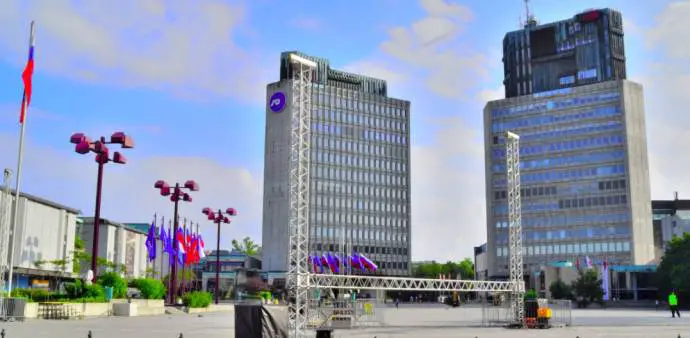The STA reports 26 January, 2018, that the Museum of Modern Art (MoMA) in New York will present some of the most important Yugoslav architects of the post-WWII period, including Slovenia's Edvard Ravnikar, at an exhibition that will be open on 15 July.
"Toward a Concrete Utopia: Architecture in Yugoslavia, 1948-1980 introduces the exceptional work of socialist Yugoslavia's leading architects to an international audience for the first time, highlighting a significant yet thus-far understudied body of modernist architecture, whose forward-thinking contributions still resonate today," MoMA says on its website under a photo of Ljubljana's Republic Square.
Among the architects presented will be the giant of Slovenian Modernism, architect, designer and professor Edvard Ravnikar (1907-1993).
Ravnikar is considered to be a key figure of the Slovenian modern architecture and urbanism.
He was a student of Slovenia's most celebrated architect Jože Plečnik (1872-1957) and led the new generation of Slovenian architects, notable for developing the Slovenian architectural infrastructure, urbanism and design in the second half of the 20th century.
He also promoted Scandinavian architectural style in Slovenia, particularly Finnish achievements, and devoted most of his life to Ljubljana and its urbanist development.
His most notable creations feature prominently in the capital, among them Republic Square, which he conceived in 1960 and which was declared national monument in June 2014, Cankarjev Dom, the Maximarket department store, and the Museum of Modern Art.
He received the Prešeren Prize for lifetime achievement in 1978.
The exhibition at MoMA, also presenting the work of Bogdan Bogdanović, Juraj Neidhardt, Svetlana Kana Radević, Vjenceslav Richter and Milica Šterić, will feature more than 400 drawings, models, photographs, and film reels from an array of municipal archives, family-held collections, and museums across the region.
The exhibition, which will be open until 13 January 2019, explores themes of large-scale urbanization, technology in everyday life, consumerism, monuments and memorialization, and the global reach of Yugoslav architecture.






